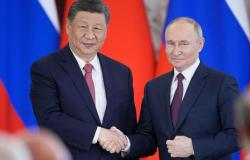Despite threats and pressures by the president of the United States, Donald Trumpwhich even requested the head of the president of the Federal Reserve (Fed), The entity remained firm this Wednesday in its decision not to hurry when lowering interest rates.
Consequently, he determined to leave them in his current range of 4,25 al 4,5%, Not without alerting that The risks of greater inflation and unemployment in the country have increased.
The Federal Open Market Committee (FOMC) of the American regulator pointed out in a statement at the end of its two -day meeting that has also increased uncertainty about economic perspectives.
However, he stressed that “recent indicators suggest that economic activity has continued to expand at a solid pace,” despite “oscillations in net exports” due to the tariff war undertaken by the Trump administration, which is not directly cited.
The Fed remains firm and leaves the types without changes
Its meeting is the third so far this year and arrives at a time when the fears that the United States between recession due to this commercial conflict begin to materialize: its GDP contracted 0.3% in the first quarter in annualized rate and 0.1% compared to the previous quarter, the first negative data since 2022.
The types have remained at 4.25 and 4.5% since the January meeting, when the Fed broke the decrease cycle initiated last September.
From before starting his second term in January, The Republican leader has not stopped pressing the president of the FED, Jerome Powell, to apply new decreases in interest rates.
Last Friday he stressed, for example, that “there is no inflation” and that both the prices of eggs and those of the basic basket have fallen, as well as that of gasoline.
This Wednesday’s Fed note, prior to Powell’s press conference, indicates that the FOMC “will closely follow the implications of incoming information for economic perspectives.”
“The Committee will be willing to adjust the monetary policy as appropriate if risks that may hinder the achievement of their objectives. Its evaluations will consider a wide range of information, including data on labor market conditions, inflationary pressures and expectations and financial and international evolution,” he said.
Unemployment remained at 4.2% in April in the US, The same level as in March, while prices descended in March 0.1%, its first monthly fall since May 2020; And they left that month interannual inflation in 2.4%.
In turn, the United States trade deficit rose 14% to 140.5 billion dollars in March, a month after the activation of global import tariffs and the increase in levies over China.
These data reflect an increase of 17.3 billion dollars compared to 123,200 million dollars in February, according to the report published Tuesday for the Economic Analysis Bureau (BEA).






